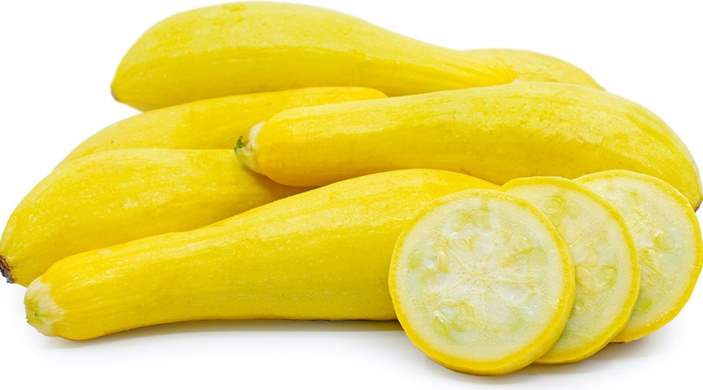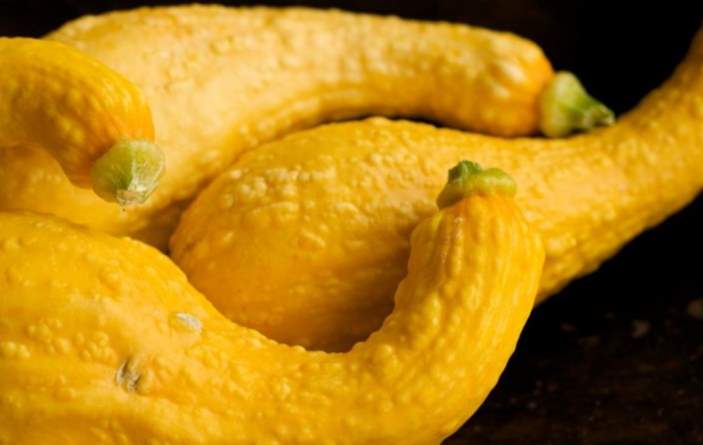Yellow squash refers to two cultivars of Cucurbita pepo, i.e., the crookneck and the straightneck. Both are summer squashes but crookneck is both summer and winter squash.
Straightneck squash
Straightneck squash is a summer squash with yellow color with a sweet flesh that is mildly sweet. It is prevalent in eastern parts of the United States. It grows on vines, and you can grill, steam, boil, bake or microwave it.

Crookneck squash
The Crookneck squash has a yellow bumpy or smooth skin, and a sweet-tasting yellow flesh and is curved towards the end attached to the stem, hence the name. The plant itself is bush (doesn’t spread much like other squashes and pumpkins).

Please don’t confuse it with Golden Cushaw or Tromboncino, which are Cucurbita moschata cultivars.
Like any other summer squash, it is harvested before it matures. At maturity, its value goes down since its skin toughens.
Can rabbits eat yellow squash?
Rabbits can eat yellow squash, i.e., both the crookneck and straightneck and skin as a treat, once in a while. They can have a teaspoon per two pounds of their weight of either these two.
For straightneck, which is a summer squash, remove any seeds since they present a choking risk, and they are unhealthy. i.e., high in fats and carbs. High carbs and fats may harm your rabbit’s digestive tract (encourage the growth of harmful microorganisms) and cause weight gain.
However, for the crookneck, don’t remove the seeds since it is harvested while still immature, just as zucchinis or courgettes. Just dice 1-2 small pieces and offer them to your furry friend.
These two yellow squashes have vitamin C, folate, manganese, copper, magnesium, potassium, and smaller amounts of thiamine, vitamin, among other nutrients. Also, they are high in water and may help ensure your bunny remains hydrated.
However, please don’t overdo it. These two are low in fiber and high in water. An excessive amount may cause stomach upsets, soft stool or diarrhea, gas, bloating, and so on.
Are they toxic?
You may have heard about the cucurbitacins and Toxic Squash Syndrome that may cause nausea, stomach pain, diarrhea, vomiting, hair loss (rarely and dizziness. It also imparts a bitter taste to the fruit. However, you don’t have to worry about it since all edible cucurbits are safe.
Leaves or plant
Yellow squash leaves, stem, or flower (vines) are safe to rabbits. For the leaves, make them part of their vegetable salad. Usually, you should give them 5-6 different types, with this squash leaves one of them. Two cups should be sufficient for a four-pound rabbit.
For the case of flowers, let them be a treat. Two small flowers or one larger one occasionally is enough. Flowers are less fibrous than leaves, a reason why you should give them a smaller amount.
Did you introduce them well?
A successful introduction of any new food needs patient. Go for organically grown yellow squashes and begin with a minimal amount to give their stomach time to adapt to the new food.
If it doesn’t cause diarrhea or any other GI issues, increase the amount but don’t go beyond the amounts we have given you.
Also, ensure you only give them one new food at a time and do so until they get accustomed to it before introducing a new one.
Finally, please don’t give them molded or cooked yellow squash, including its leaves. Molded one will make your furry friend ill while cooking will degrade nutritional content, fiber and make it less appealing to your rabbits.
